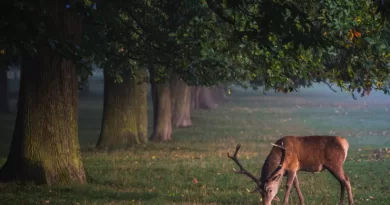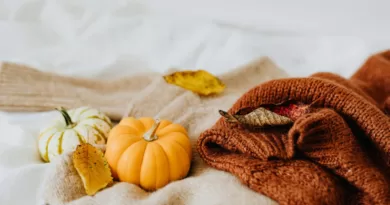Are Coral Bells Deer Resistant
Understanding Deer Behavior and Preferences
Deer behavior and preferences play a significant role in understanding how these magnificent creatures interact with their environment. Deer are known to be herbivores, consuming a variety of plant materials to meet their nutritional needs. However, their preferences can vary depending on factors such as availability, season, and food quality.
When it comes to foraging, deer are highly adaptable and can consume a wide range of plants, including grasses, leaves, twigs, and even bark. They have a particular fondness for tender, young shoots and leaves, which are rich in nutrients. This affinity for fresh foliage often leads them to browse on plants that humans may find desirable in their gardens, causing frustration for gardeners who struggle to coexist with these graceful creatures.
Understanding deer behavior is crucial for gardeners and landscapers who wish to develop strategies to protect their plants. By understanding their preferences and patterns, it becomes possible to implement methods that deter deer and minimize damage. Strategies such as planting deer-resistant species, using physical barriers, or employing repellents can greatly reduce deer browsing and help maintain the beauty and integrity of our gardens. However, it is important to remember that these strategies may not guarantee complete deer exclusion, as deer behavior can be influenced by factors such as population density, hunger, and availability of alternative food sources.
Characteristics of Coral Bells
Coral bells, scientifically known as Heuchera, are herbaceous perennial plants that are beloved for their decorative foliage and delicate blooms. They belong to the Saxifragaceae family and are native to North America. These plants are highly valued in the gardening world, not only for their striking appearance but also for their versatility and adaptability to various growing conditions.
One of the most notable characteristics of coral bells is their wide range of leaf shapes, sizes, and colors. The leaves can be round, heart-shaped, lobed, or even ruffled, adding the perfect touch of diversity to any garden. The foliage color is equally impressive, with options ranging from deep burgundy and rich purple to vibrant lime green and creamy yellow. This variability in leaf color allows gardeners to create visually stunning displays and adds interest to garden beds, borders, and containers.
Evaluating Deer Damage on Coral Bells
Coral bells, also known as Heuchera, are a popular choice for gardeners looking to add color and texture to their landscapes. However, these delicate plants are often a target for hungry deer. Evaluating deer damage on coral bells is a crucial step in understanding the impact that these animals can have on these beloved plants.
One of the most visible signs of deer damage on coral bells is the presence of chewed leaves. Deer have a tendency to nibble on the leaves, often leaving behind ragged edges or even completely stripped foliage. This not only detracts from the plant’s aesthetic appeal but can also hinder its ability to photosynthesize and thrive. Additionally, deer may trample or break the stems of coral bells as they browse through the garden, further compromising the plant’s health.
Evaluating the extent of deer damage on coral bells is essential for developing effective strategies to protect these plants. By recognizing the signs of deer activity and understanding the impact it has on coral bells, gardeners can take appropriate measures to prevent future damage and ensure the long-term survival of these beautiful additions to their gardens.
Deer-Resistant Plants: What Does It Mean?
Deer-resistant plants refer to those that are less likely to be consumed or damaged by deer. While no plant can be completely immune to a hungry deer, certain characteristics can make a plant less appealing to these animals. Plants with strong scents, rough textures, or bitter tastes are often considered deer-resistant. Additionally, plants with high levels of toxicity or thorny structures can also deter deer from grazing on them.
The concept of deer-resistant plants is particularly important for gardeners who live in areas with a high deer population. By selecting plants that are less attractive to deer, gardeners can minimize the extent of damage caused by these animals and enjoy a more thriving garden. It is worth noting that deer preferences can vary depending on the region and the specific deer species present, so it is always recommended to research the local deer behavior and preferences before selecting deer-resistant plants for a garden.
Factors That Make Coral Bells Less Appealing to Deer
Coral bells (Heuchera spp.) possess several characteristics that make them less appealing to deer. Firstly, their tough, leathery leaves are not as palatable to these herbivores as softer, more succulent foliage. Deer typically prefer plants with tender, easily digestible foliage, so the thick leaves of coral bells act as a natural deterrent.
Additionally, the unique scent of coral bells can also discourage deer from grazing. These plants produce a distinct odor that is not attractive to deer, and they may even have a slightly bitter taste that deters feeding. This combination of less palatable leaves and undesirable scent makes coral bells a less enticing option for deer, helping to protect them from excessive browsing.
Deer preference for certain plants can vary depending on factors such as geographic location, food availability, and deer population density. While coral bells have a natural defense against grazing, it is important to remember that no plant is completely deer-proof. In areas with high deer populations or limited forage, even plants considered to be less appealing may still be at risk. Therefore, it is essential to consider additional strategies for protecting coral bells and other susceptible plants from deer damage.
Natural Defenses of Coral Bells Against Deer
Coral bells (Heuchera) are prized for their vibrant foliage and delicate flowers, but they also possess natural defenses that make them less appetizing to deer. One such defense is their bitter taste. The leaves of coral bells contain compounds that give them a distinct bitterness, which deer find unpalatable. This bitterness acts as a deterrent, preventing deer from feasting on these beautiful plants.
In addition to their bitter taste, coral bells also have a strong scent that deer tend to avoid. The leaves and flowers of coral bells release a subtle fragrance that may not be noticeable to humans, but is highly effective in repelling deer. This scent is thought to be a natural defense mechanism evolved by the plant to ward off browsing animals. By emitting this scent, coral bells send a clear signal to deer that they are not a suitable food source.
Companion Plants That Deter Deer from Coral Bells
Companion plants that deter deer from coral bells can be a valuable addition to any garden. These plants not only provide a beautiful backdrop for the coral bells, but they also act as natural deterrents to keep deer at bay. One option is to plant aromatic herbs such as mint, rosemary, and lavender near the coral bells. The strong scents of these herbs can confuse and repel deer, making them less likely to venture too close to the coral bells.
Another effective companion plant is the butterfly bush. This vibrant flowering shrub not only attracts butterflies, but it also repels deer with its strong scent. Additionally, the butterfly bush adds height and dimension to the garden, creating a visually stunning display alongside the coral bells. Other companion plants that can deter deer include yarrow, marigold, and agastache. By strategically planting these companions around the coral bells, gardeners can create a natural barrier that deer are less likely to cross.
Tips for Protecting Coral Bells from Deer
One effective way to protect your coral bells from deer is to use physical barriers. Installing a sturdy fence around the coral bells can help deter deer from reaching them. Make sure the fence is tall enough to prevent deer from easily jumping over it. Additionally, consider using netting or mesh covers to further protect the plants. These barriers can be particularly useful during the spring and summer months when deer are more likely to browse on plants.
Another tip for protecting coral bells from deer is to use deer repellents. There are various repellent options available, such as sprays or granules, that emit scents or tastes that are unpleasant to deer. Apply the repellent according to the instructions on the packaging, ensuring even coverage on the foliage and surrounding soil. It’s important to reapply the repellent regularly, especially after rainfall, to maintain its effectiveness. Keep in mind that deer repellents may need to be used in conjunction with other protective measures for optimal results.
How to Create a Deer-Resistant Garden with Coral Bells
Creating a deer-resistant garden with coral bells requires careful planning and consideration. One approach is to strategically choose companion plants that deter deer from feasting on your precious coral bells. By selecting plants with strong fragrances or textures that deer find unappealing, you can create a natural deterrent. Examples of companion plants that work well in this regard include lavender, rosemary, and thyme. These aromatic herbs not only add beauty and interest to your garden but also help to keep the deer at bay.
Additionally, implementing physical barriers can be an effective method to protect your coral bells from deer damage. Fencing your garden with a tall, sturdy material, such as metal or mesh, can provide a reliable barrier that keeps deer out. Be sure to secure the fencing tightly to prevent deer from squeezing through any gaps. Another option is to use netting or cages around individual plants to create a physical barrier. This method can be particularly useful for young coral bells or if you have a small garden space. Remember to place the barriers at a sufficient height to prevent deer from reaching over or through them. Overall, a combination of companion plants and physical barriers can greatly increase the chances of creating a deer-resistant garden with thriving coral bells.
• Choose companion plants with strong fragrances or textures that deter deer, such as lavender, rosemary, and thyme.
• Implement physical barriers like tall and sturdy fencing made of metal or mesh to keep deer out.
• Secure the fencing tightly to prevent deer from squeezing through any gaps.
• Use netting or cages around individual plants for added protection, especially for young coral bells or in small garden spaces.
• Ensure that the barriers are placed at a sufficient height to prevent deer from reaching over or through them.
In conclusion, understanding deer behavior and preferences is essential for gardeners looking to protect their coral bells. By recognizing characteristics of coral bells and evaluating deer damage, gardeners can gain insight into why deer may find these plants appealing. However, it is important to note that the term “deer-resistant” does not guarantee complete immunity from deer damage. Factors like plant location, scent, texture, and taste all play a role in deterring deer from coral bells.
Fortunately, coral bells possess natural defenses that make them less appealing to deer. Their fuzzy leaves, bitter taste, and toxic compounds act as barriers against deer grazing. Additionally, by strategically planting companion plants that deer find unattractive, gardeners can further protect their coral bells. Implementing these tactics and following practical tips for deterring deer can help create a more deer-resistant garden with coral bells as a beautiful centerpiece.
What is the significance of understanding deer behavior and preferences?
Understanding deer behavior and preferences is important in order to effectively protect plants, such as coral bells, from deer damage. By knowing what attracts deer and what they prefer to feed on, gardeners can make informed decisions on plant selection and implement strategies to deter deer.
What are the characteristics of coral bells?
Coral bells, also known as Heuchera, are perennial plants that are prized for their attractive foliage and delicate flowers. They have a low, mounding habit and their leaves come in a variety of colors, ranging from green to bronze, purple, and silver. Coral bells are commonly used in gardens and landscapes for their ornamental value.
How can deer damage on coral bells be evaluated?
Deer damage on coral bells can be evaluated by examining the plants for signs of browsing, such as partially eaten leaves or stems. The extent of the damage can be assessed by observing the overall health and appearance of the plants. Additionally, the presence of deer tracks or droppings in the garden can indicate deer activity and potential damage.
What does it mean for a plant to be deer-resistant?
When a plant is described as deer-resistant, it means that deer are less likely to feed on or damage that particular plant. However, it’s important to note that deer-resistant plants are not completely immune to deer browsing and preferences can vary among individual deer.
What factors make coral bells less appealing to deer?
Several factors can make coral bells less appealing to deer. These include the plant’s texture, taste, and scent. Coral bells have tough, hairy leaves that can be unpalatable to deer. Additionally, certain cultivars of coral bells may have stronger scents or bitter tastes that deter deer.
What natural defenses do coral bells have against deer?
Coral bells have natural defenses against deer, such as their tough and hairy leaves. These physical characteristics can make it difficult and unappetizing for deer to feed on coral bells. Additionally, some cultivars of coral bells may contain compounds that are unappealing to deer.
Are there companion plants that can deter deer from coral bells?
Yes, there are companion plants that can help deter deer from coral bells. Some examples include plants with strong scents, such as lavender, rosemary, or garlic. These scents can mask the scent of coral bells and make them less attractive to deer. Planting these companion plants alongside coral bells can help protect them from deer damage.
What tips can be followed to protect coral bells from deer?
To protect coral bells from deer, gardeners can try a few different strategies. These include using physical barriers like fences or netting, applying deer repellents or deterrent sprays, planting deer-resistant companion plants, and creating a garden layout that makes it less accessible for deer to reach the coral bells.
How can a deer-resistant garden with coral bells be created?
To create a deer-resistant garden with coral bells, it is important to select deer-resistant plants and incorporate them into the garden design. This can include using plants with strong scents or plants that are known to be less appealing to deer. Additionally, implementing strategies like fencing or using deer repellents can further protect coral bells from deer damage.
What is the conclusion of the article?
In conclusion, understanding deer behavior and preferences is crucial in protecting plants like coral bells from deer damage. While coral bells may not be completely immune to deer browsing, there are several factors that can make them less appealing to deer. By implementing strategies such as planting deer-resistant companion plants and using physical barriers or repellents, gardeners can create a deer-resistant garden that allows coral bells to thrive.




